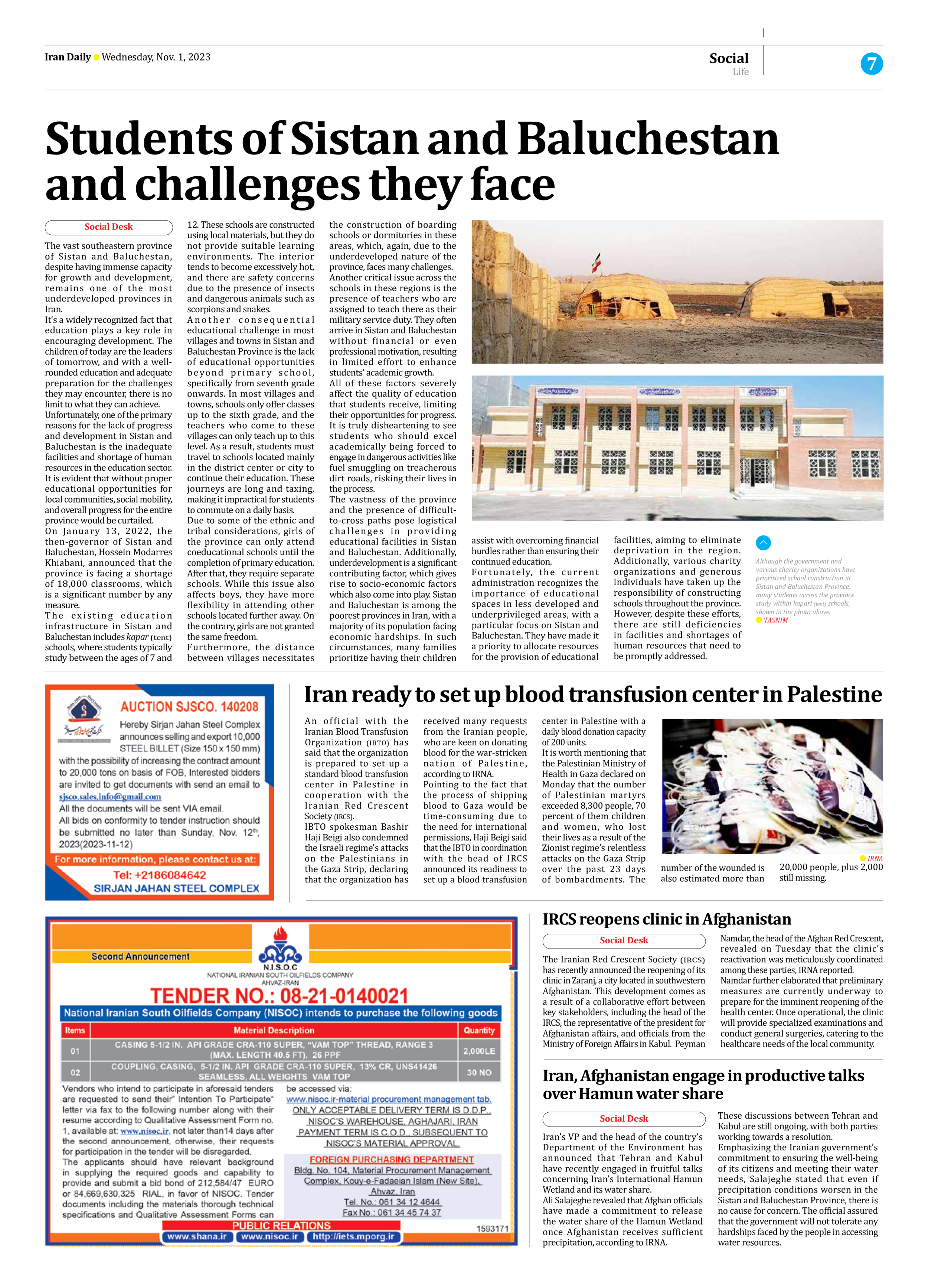
Students of Sistan and Baluchestan and challenges they face
The vast southeastern province of Sistan and Baluchestan, despite having immense capacity for growth and development, remains one of the most underdeveloped provinces in Iran.
It’s a widely recognized fact that education plays a key role in encouraging development. The children of today are the leaders of tomorrow, and with a well-rounded education and adequate preparation for the challenges they may encounter, there is no limit to what they can achieve.
Unfortunately, one of the primary reasons for the lack of progress and development in Sistan and Baluchestan is the inadequate facilities and shortage of human resources in the education sector. It is evident that without proper educational opportunities for local communities, social mobility, and overall progress for the entire province would be curtailed.
On January 13, 2022, the then-governor of Sistan and Baluchestan, Hossein Modarres Khiabani, announced that the province is facing a shortage of 18,000 classrooms, which is a significant number by any measure.
The existing education infrastructure in Sistan and Baluchestan includes kapar (tent) schools, where students typically study between the ages of 7 and 12. These schools are constructed using local materials, but they do not provide suitable learning environments. The interior tends to become excessively hot, and there are safety concerns due to the presence of insects and dangerous animals such as scorpions and snakes.
Another consequential educational challenge in most villages and towns in Sistan and Baluchestan Province is the lack of educational opportunities beyond primary school, specifically from seventh grade onwards. In most villages and towns, schools only offer classes up to the sixth grade, and the teachers who come to these villages can only teach up to this level. As a result, students must travel to schools located mainly in the district center or city to continue their education. These journeys are long and taxing, making it impractical for students to commute on a daily basis.
Due to some of the ethnic and tribal considerations, girls of the province can only attend coeducational schools until the completion of primary education. After that, they require separate schools. While this issue also affects boys, they have more flexibility in attending other schools located further away. On the contrary, girls are not granted the same freedom.
Furthermore, the distance between villages necessitates the construction of boarding schools or dormitories in these areas, which, again, due to the underdeveloped nature of the province, faces many challenges.
Another critical issue across the schools in these regions is the presence of teachers who are assigned to teach there as their military service duty. They often arrive in Sistan and Baluchestan without financial or even professional motivation, resulting in limited effort to enhance students’ academic growth.
All of these factors severely affect the quality of education that students receive, limiting their opportunities for progress. It is truly disheartening to see students who should excel academically being forced to engage in dangerous activities like fuel smuggling on treacherous dirt roads, risking their lives in the process.
The vastness of the province and the presence of difficult-to-cross paths pose logistical challenges in providing educational facilities in Sistan and Baluchestan. Additionally, underdevelopment is a significant contributing factor, which gives rise to socio-economic factors which also come into play. Sistan and Baluchestan is among the poorest provinces in Iran, with a majority of its population facing economic hardships. In such circumstances, many families prioritize having their children assist with overcoming financial hurdles rather than ensuring their continued education.
Fortunately, the current administration recognizes the importance of educational spaces in less developed and underprivileged areas, with a particular focus on Sistan and Baluchestan. They have made it a priority to allocate resources for the provision of educational facilities, aiming to eliminate deprivation in the region. Additionally, various charity organizations and generous individuals have taken up the responsibility of constructing schools throughout the province. However, despite these efforts, there are still deficiencies in facilities and shortages of human resources that need to be promptly addressed.







